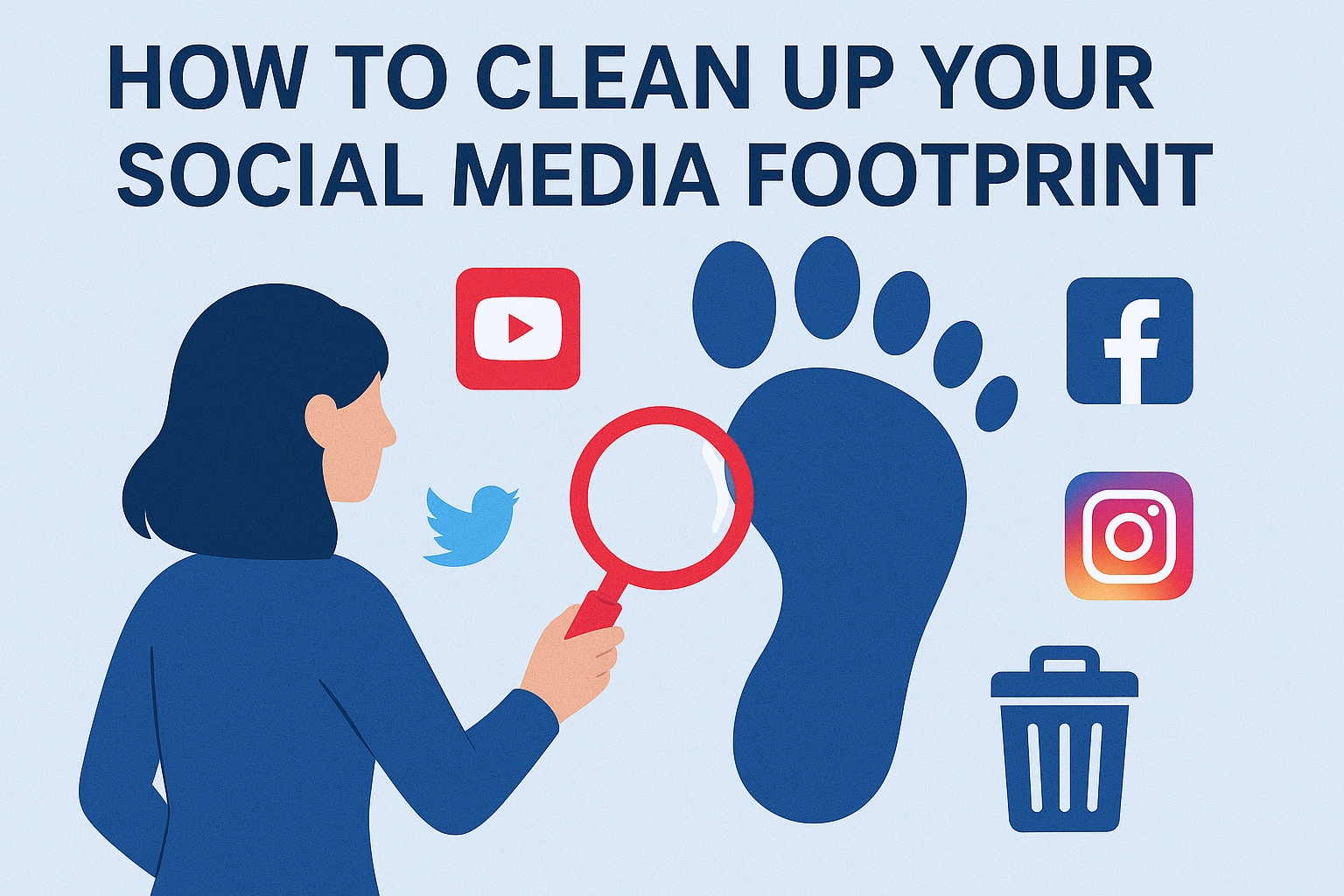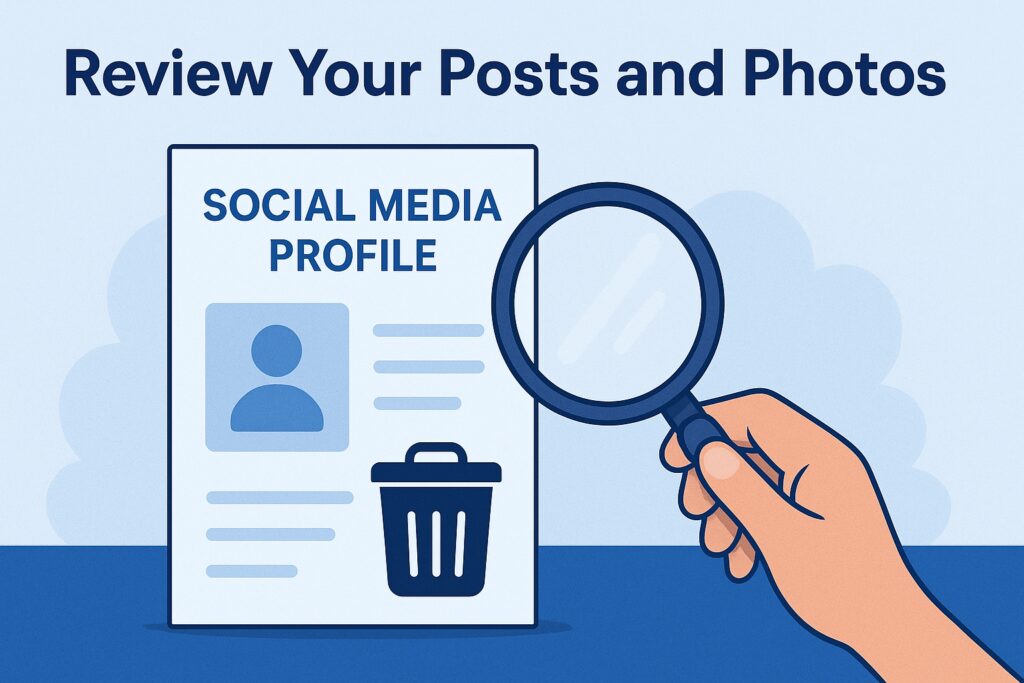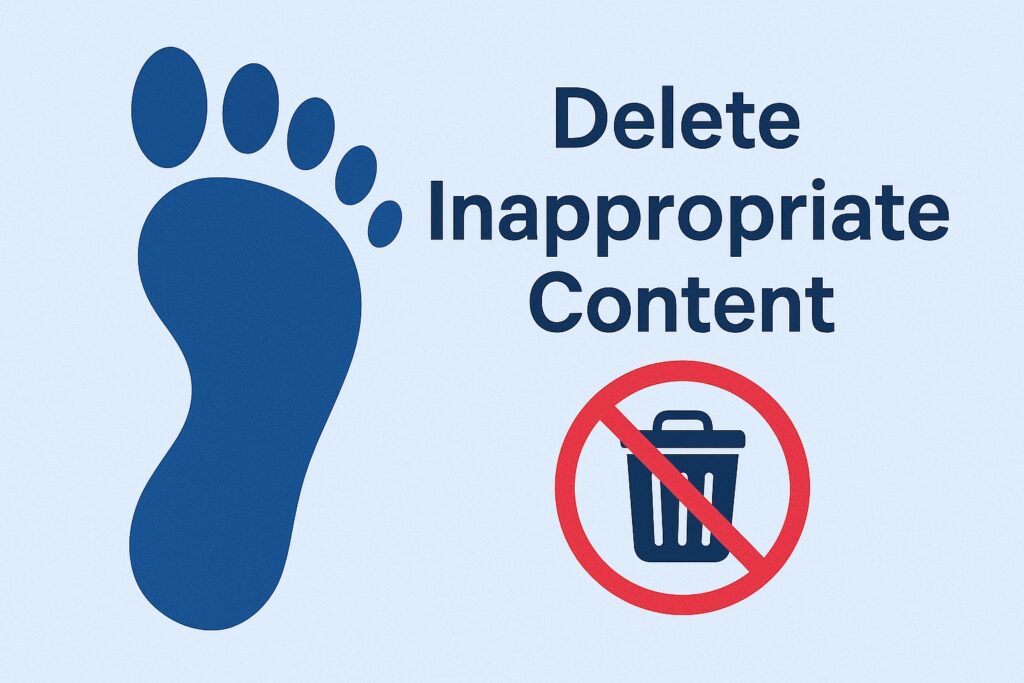
How to Clean Up Your Social Media Footprint Before a Job Search
Categories: Business, Data, Data Privacy, Digital Footprint, Employment, Privacy Guides, Social Media, Social Media Management
First Impressions Are Made Online
Before an employer invites you to interview, there is a very good chance they will check your online presence. In many cases, the first thing they will see is not your résumé, it is your public social media profiles. A single old post, questionable comment, unprofessional photo or even likes on inappropriate content can influence whether you move forward in the hiring process.
Your social media footprint includes every public post, comment, like, and profile linked to you across platforms like Facebook, Instagram, LinkedIn, Twitter/X, TikTok, and Reddit. Cleaning it up before you apply for jobs ensures potential employers see you in the best possible light.
This guide provides a step-by-step process for reviewing, removing, and improving your social media presence while also touching on your broader digital footprint for a complete cleanup.
Why Your Social Media Footprint Matters to Employers
- Recruiters look at it. Many hiring managers check social media before making a decision.
- It shapes perceptions. Posts reflect your professionalism, judgment, and communication style.
- Old content is easy to find. Even posts from years ago can resurface with a quick search.
- A clean presence is an advantage. Well-managed profiles project a trustworthy and professional image.

How to clean up your social media for a job search
Step 1 – Audit Every Account
Start by finding out what is already out there:
- List all accounts, including major platforms and smaller ones you may have forgotten.
- Search your name in full, along with usernames and common variations, on major search engines. Most importantly, Google.
- Check the public view by using the “view as” feature that many social media profiles have so you can see what others see.
Step 2 – Flag Content to Remove or Restrict
Look for anything that could be seen as unprofessional:
- Offensive or inappropriate language.
- Political or polarizing posts unrelated to your professional life.
- Party or vacation photos that could be misinterpreted.
- Hostile comment threads or arguments.
- Old usernames, photos, or bios that no longer fit your personal brand.
Step 3 – Clean Up Your Profiles
Manual deletion:
- Remove posts one at a time.
- Change privacy settings on each platform to limit visibility of your content, if possible.
Automated cleanup with Redact.dev:
- Bulk-delete posts, comments, likes, and media across dozens of social media platforms.
- Filter by keywords, hashtags, or date ranges to target specific types of content.
- Use “nuke mode” to clear an entire account’s history in one step.
- Schedule recurring cleanups to keep your social media footprint in check over time.
Social Media Cleanup Checklist by Platform
| Platform | Common Problem Content to Remove | Privacy Settings to Review | Extra Tips |
|---|---|---|---|
| Old posts, tagged party photos, political rants, outdated profile info | Timeline review, photo tagging, public post visibility | Remove inactive groups and likes from old pages | |
| Twitter/X | Offensive tweets, polarizing opinions, arguments, insensitive humor | Tweet privacy (public vs. protected), DM settings | Bulk delete old tweets using keyword or date filters |
| Inappropriate photos, captions with offensive language, irrelevant highlights | Story archive privacy, tagged photos | Audit who can tag or mention you | |
| Outdated job history, unprofessional comments on posts | Profile visibility, activity broadcast settings | Keep profile photo professional and current | |
| Old posts in controversial subreddits, arguments in comment threads | Profile visibility, post history | Delete posts that no longer align with your image | |
| TikTok | Trend videos that could appear unprofessional, offensive comments | Who can view or comment on videos, duet and stitch permissions | Remove or archive viral posts that do not fit your professional brand |
Step 4 – Refresh and Optimize Remaining Content
After removing unwanted material:
- Upload a recent, professional profile photo.
- Rewrite bios to highlight relevant skills and achievements.
- Feature current projects or professional milestones.
- Keep usernames consistent across platforms.
Step 5 – Maintain a Professional Presence Going Forward
- Schedule periodic cleanups using automated tools.
- Think twice before posting. If it is questionable in a job interview, it is risky online.
- Consider separate accounts for personal and professional use.

Bottom Line
Your social media footprint is part of your professional image. Cleaning it up before a job search can remove potential red flags and ensure employers focus on your skills and qualifications. With tools like Redact.dev, you can speed up the process, automate ongoing cleanups, and maintain control over your broader digital footprint, all while keeping your data private on your own device.